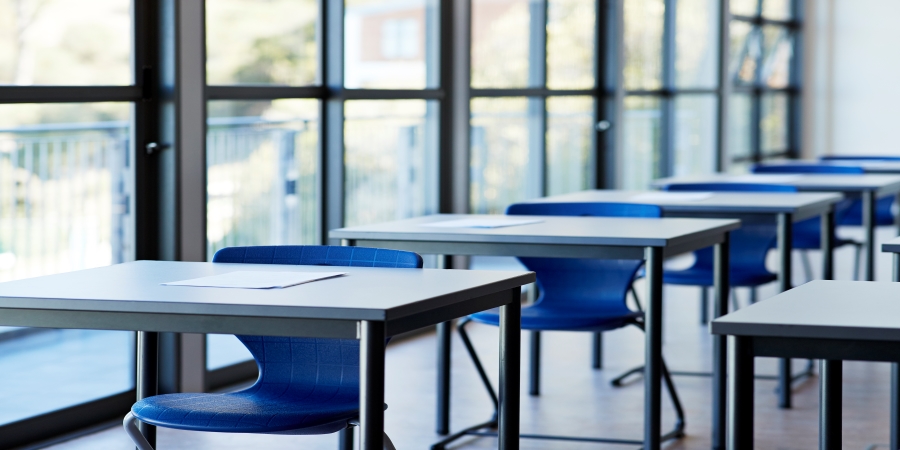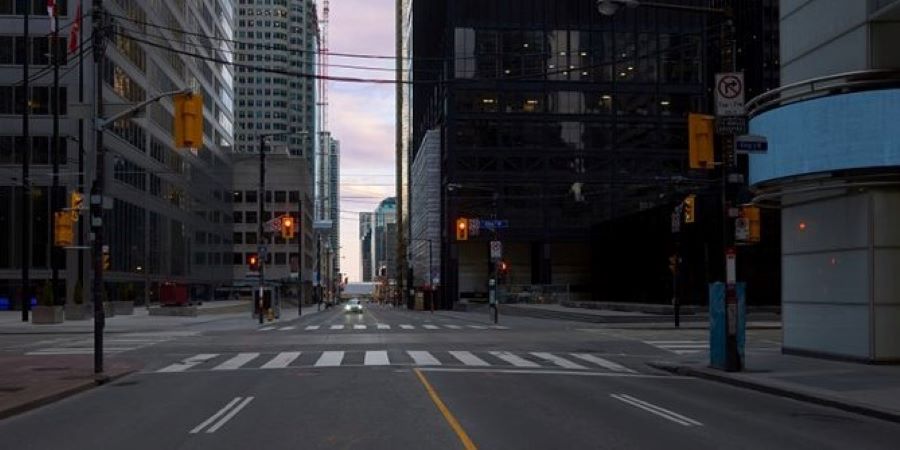by Kristina Hooper, Global Market Strategist, Invesco Ltd., Invesco Canada
Last Friday, my oldest child graduated from high school. Late July is not normally associated with graduations, but we are living in a time of COVID, and so what was supposed to occur two months earlier in the New York area was postponed and rescheduled. We were incredibly grateful to our son’s high school for putting on five separate graduation ceremonies in the course of a day to comply with New York State regulations that allow a maximum of 150 people to attend gatherings. Given the need to fit in five ceremonies in one day, the event felt like one part important milestone and one part fast food drive thru — which made it the first high school graduation I ever attended that was efficiently run and ended before you actually started wishing it could end. I was struck by the commencement speaker and his very honest words to the graduates. He told them that he couldn’t imagine having to miss out on the many important senior-year milestones that the class of 2020 missed because of the pandemic. He told them that this year has created a wound that will take years to heal.
Hearing those words, my mind couldn’t help but wander a bit, thinking about all the economic wounds created by the pandemic. The second-quarter gross domestic product (GDP) reports for a number of major economies came to mind. I thought of the many wonderful small businesses that have closed permanently, and the large companies that survived other economic crises over the years only to have filed for bankruptcy during this pandemic. And I thought about my youngest child’s school, which was one of a number of schools permanently closed by our diocese because of the very difficult economic climate.
Some economic wounds may be avoidable
I also thought about the potential for self-inflicted wounds that could exacerbate an already-difficult situation. For example, last Friday marked the day many Americans would begin losing federal unemployment benefits. We are already starting to see a stalling of economic data, and families losing their benefits could make August’s data even worse.
I know I have shared this statistic before, but I will share it again: 37% of American households do not have enough savings to meet a $400 emergency expense — and that statistic comes from a Federal Reserve survey conducted before the pandemic hit the U.S.1 In addition, other households — with mostly white collar employees who are able to work from home — are not spending much and instead continue to hold elevated levels of cash, as seen in a relatively high personal savings rate of 19% for the month of June.2 This isn’t a good sign for businesses that rely on consumer spending — and I believe that the savings rate is likely to move higher if the virus is not controlled.
The U.S. Senate still seems far from reaching a deal — at least one that addresses all the pressing needs facing America, including state and local government funding. I suspect August will be something of a “Great Stall” for the U.S. economy if high unemployment and rising virus cases persist without adequate fiscal stimulus. As Fed Chair Jay Powell stressed last week: “The path of the economy will depend significantly on the course of the virus.”3 Powell also felt it important to add that, in this environment, more fiscal stimulus is critically needed (and, of course, the Fed will remain extremely accommodative).
Could schools set off a ‘second wave’ of virus cases?
Of course, that raises an important question: Will the virus persist? It certainly appears that the virus may have peaked in a number of “hot spot” states and could be in the process of being tamed. However, we are now entering back-to-school season, which carries with it the potential for many “super-spreading” occasions. I am more concerned about this possibility after reading a report released on Friday by the Centers for Disease Control and Prevention (the CDC) about a COVID-19 outbreak at a sleepaway camp in northern Georgia in late June. Campers and staff had to meet safety protocol — including a negative COVID-19 test — before being able to stay at the camp. Staff members were required to wear masks, but campers were not. They participated in normal camp activities until a camp counselor became ill just a few days after camp began, and later tested positive for COVID-19. More than half of those at the camp were tested for COVID-19, and a stunning 76% tested positive.4
I, like many of you, am the parent of several school-age children, and I was happily preparing them to go back to school in September, but this report gave me pause. While the Georgia camp did not require campers to wear face masks (perhaps the simplest action to help prevent the spread of the virus without impacting the economy), most states will likely require students to wear face masks. Even so, that was an incredibly high rate of transmission, and so if schools do open for in-person classes, I fear it could hasten a second wave of infections. And this in turn could lead many Americans to return to “self-quarantine” — sheltering in place whether or not government officials direct them to.
Dr. Deborah Birx, coordinator of the White House coronavirus task force, has also warned about how widespread the virus has become; in many ways, it is now more dangerous than it was in March and April when it was concentrated in a few big cities in the U.S. because it is now in both rural and urban areas around the country.5 She also warned about “super-spreading events,” which I fear could include sending students back to school — at least in areas where the virus has not been sufficiently tamped down. This could prove to be another self-inflicted wound to the U.S. economy — but hopefully I will be wrong.
The U.S. is not alone in its potential to inflict wounds upon itself. Re-opening economies too quickly or becoming less disciplined about following safety protocol threatens to cause unnecessary wounds to any economy. Some countries such as Spain are facing virus resurgences that could prove economically damaging if they are not able to control them in the near term. Even British Prime Minister Boris Johnson is worried about this and has warned the UK not to create a self-inflicted wound through lack of vigilance: “… I have to tell you that we are looking at a resurgence of the virus in some other European countries and you can see what’s been happening in the United States, and so it is absolutely vital as a country that we continue to keep our focus and our discipline.”6
What does this mean for the U.S. economy?
Given all of these concerns, I anticipate a short-term decoupling of the U.S. economy (and other economies that aren’t able to control the virus) from most other major economies that are likely to see continued improvement. Recent economic data has borne this out. Purchasing Managers’ Index (PMI) data for China7 showed slow but continued improvement in June, while industrial production in South Korea showed significant growth after disappointment in May.8 And I expect Eurozone PMI this coming week to show improvement. Not only is large fiscal stimulus coming to the eurozone, but there is already a significant social safety net there — unlike the U.S. Last week, the U.S. saw a second week of rising initial jobless claims after 15 weeks of declining initial jobless claims.9 And I expect that the July jobs report for the U.S. will be disappointing as well.
This all suggests that in the near term, U.S. dollar weakness is likely to persist while U.S. Treasuries and gold are likely to remain popular. I think U.S. stocks might underperform other regions modestly. However, earnings season has been positive thus far, which should be mildly positive for U.S. stocks. And, more importantly, U.S. stocks have the Fed supporting them and other risk assets.
If economic data does weaken and the virus is not well-controlled in the U.S., I expect secular growth stocks, especially in the technology sector, to outperform. However, I expect a dramatic shift in leadership to cyclical stocks and away from “safe haven” asset classes such as Treasuries and gold once economic data begins to improve significantly again or an effective vaccine is introduced. And that may not be far off.
It’s clear that significant progress is being made toward a vaccine based on clinical trials being conducted by a number of pharma/biotech companies: Five companies are already in Phase 3 clinical trials or will be starting by the end of September, according to Dr. Moncef Slaoui, an immunologist and chief advisor to the U.S.’ Operation Warp Speed — the project to create a COVID-19 virus. He expects to have millions of doses of effective vaccine by December 2020 or January 2021.10 Dr. Anthony Fauci of the National Institutes of Health, who has devoted his long career to the treatment of infectious diseases, recently said he is “cautiously optimistic” a vaccine could be available by January.11 Until then, we will be following a wide range of data closely, given that the economic outlook is impacted by medical and scientific progress, fiscal stimulus and consumer and corporate behaviour.
This post was first published at the official blog of Invesco Canada.














